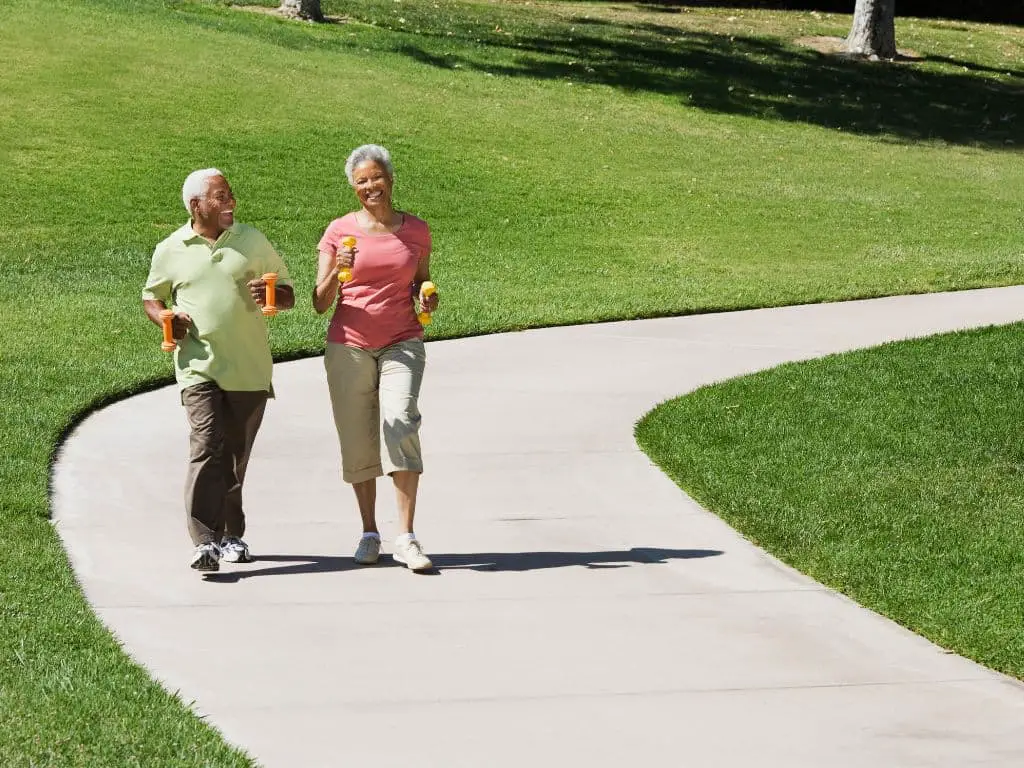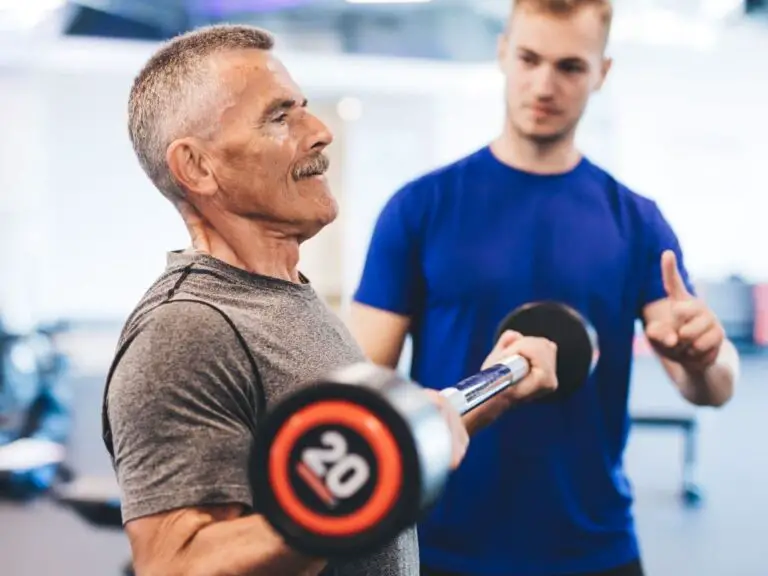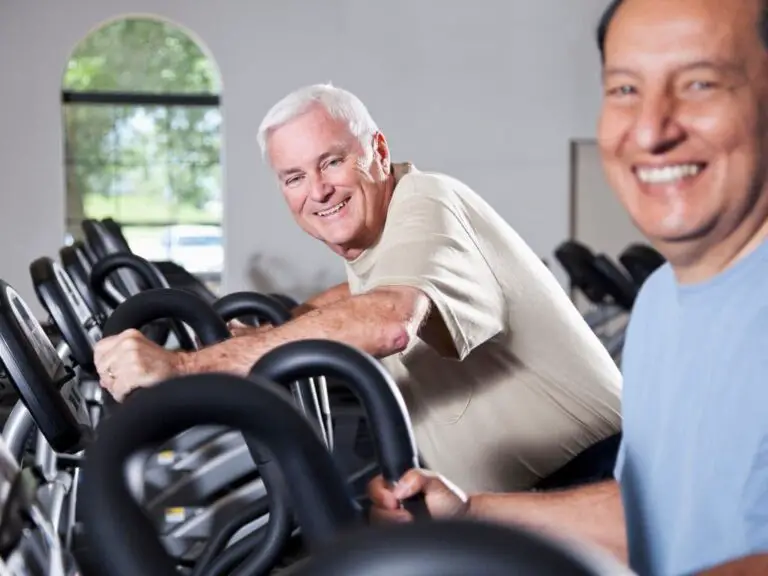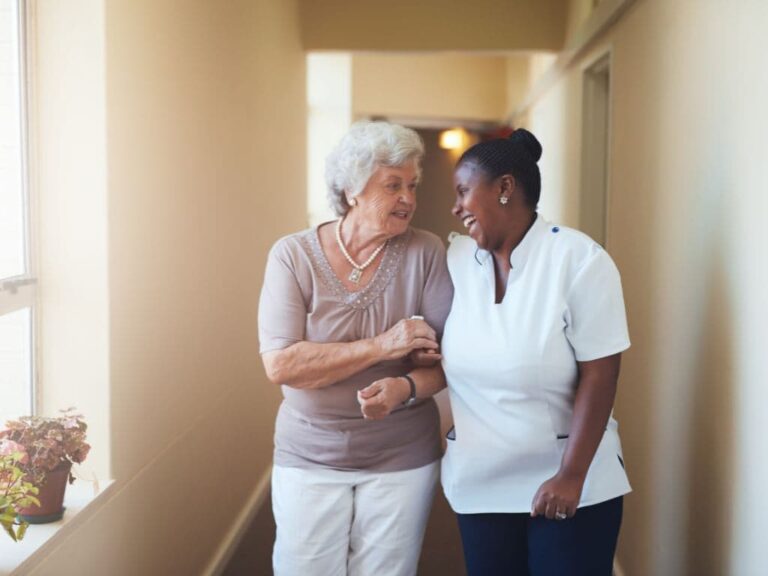What Happens if We Walk Too Much?
Walking is an excellent form of exercise that offers many health benefits for seniors. However, it is possible to overdo walking, which can lead to risks and injuries. The key is finding the right balance of walking to gain the benefits without overexerting yourself.
Walking excessively can lead to overuse injuries such as sprains, strains, tendinitis, and stress fractures, particularly in seniors. Overlong walking sessions can also result in muscle soreness and dehydration, especially in older adults who are more prone to these conditions. It’s crucial to find a balance to gain the benefits without overexerting oneself.

What are the Health Benefits of Walking for Seniors?
Walking provides numerous health benefits for seniors. It can improve heart health, bone health, and mental health in various ways.
How Does Walking Improve Heart Health in Seniors?
Regular walking helps improve cardiovascular fitness and heart health in several ways. Walking gets the heart pumping faster, which strengthens the heart muscle. It also improves circulation and lowers blood pressure. Additionally, walking helps manage weight and cholesterol, reducing heart disease risk factors. Overall, walking is an excellent form of aerobic exercise that keeps the heart and cardiovascular system in good working order.
How Can Walking Enhance Bone Health in Seniors?
Walking can enhance bone density and bone health. The impact of walking stimulates bones to retain and even build more bone mass. This can help prevent osteoporosis and risk of fractures. Walking also improves strength and balance, which further reduces seniors’ chances of falls and injuries. So incorporating walking into the daily routine aids in maintaining strong, healthy bones.
What is the Impact of Walking on Mental Health for Seniors?
Walking has demonstrated positive effects on mental health in seniors. The rhythmic nature of walking can have a meditative quality, reducing stress and anxiety. Walking also releases feel-good endorphins that boost mood. In addition, staying active provides a sense of purpose and accomplishment. Walking outdoors exposes people to sunlight and nature, providing further mental health gains. So the act of walking can significantly enhance overall mood and outlook.
How Much Walking is Too Much for Seniors?
The appropriate amount of walking depends on each senior’s fitness level and health conditions. Knowing when too much walking becomes risky or harmful is important.
How Does the Fitness Level of Seniors Affect the Amount of Walking They Can Do?
For relatively fit and active seniors, longer or faster walking is likely fine. But seniors who are less fit or just starting an exercise program should limit walking sessions to 10-15 minutes at first. They can gradually build up duration and intensity over several weeks. Pushing too hard initially risks injury, strain, or exhaustion. Knowing personal limits and increasing walking sensibly is key.
How Do Health Conditions Influence the Amount of Walking Suitable for Seniors?
Seniors with arthritis, heart disease, diabetes or other health issues often cannot handle extended periods of walking without pain or problems. Conditions like these mean seniors may need to walk in shorter bursts with more rest breaks. Consulting a doctor helps determine appropriate walking limits based on health status. Pre-existing injuries may also restrict walking capacity. Understanding one’s physical constraints ensures seniors don’t overexert themselves.
What are the Risks of Overdoing Exercise in Seniors?
While regular moderate exercise provides many health gains, overdoing activities like walking has risks for seniors. Potential problems include injuries, muscle soreness, and dehydration.
What Injuries Can Seniors Sustain from Overdoing Exercise?
Too much walking can lead to overuse injuries of the feet, ankles, knees, hips and back. Common injuries like sprains, strains, tendinitis, and stress fractures can bench seniors for weeks. Starting slow and building up distance minimizes injury risk. Also important are proper footwear, stretching, and strength training to support joints.
How Can Overdoing Exercise Lead to Muscle Soreness in Seniors?
When seniors suddenly walk longer distances than their bodies are conditioned for, moderate to severe muscle soreness can result. This post-exercise muscle pain and stiffness, particularly in the legs, hips and back, may discourage seniors from sticking with a walking routine. Gradually increasing time and distance walked prevents overworking the muscles.
Why Can Overdoing Exercise Cause Dehydration in Seniors?
Walking causes the body to sweat and lose fluid through evaporation. Inadequate water intake before and during extended walking can lead to dehydration. Seniors are more prone to dehydration given thinner skin and lower fluid content. Preventing dehydration requires drinking enough water and taking walking breaks to rehydrate. Monitoring thirst and urine color helps gauge hydration needs.
How Can Seniors Stay Safe While Walking?
Seniors can take certain precautions to walk safely and avoid injury or strain. These include choosing proper footwear, walking in appropriate locations, and pacing oneself.
What Kind of Shoes Should Seniors Wear for Walking?
Proper walking shoes provide arch support, cushioning and stability for seniors. The best shoes have thick flexible soles, snug heels, and lightweight breathable upper material. Shoes should fit comfortably with enough room for toes. Worn-out walking shoes lacking support raise injury risk and can cause foot pain. Investing in quality footwear designed for walking protects seniors.
Why Should Seniors Choose Well-Lit Areas for Walking?
Walking in adequately lit areas helps prevent falls and injuries. Poorly lit sidewalks, trails or paths present tripping hazards seniors cannot see well. Choosing routes with sufficient lighting, or walking during daylight hours, improves safety. Reflective material on shoes and clothing also enhances visibility of seniors in dim conditions.
Why is it Important for Seniors to Take Breaks While Walking?
Trying to walk for extended periods nonstop can tax seniors’ endurance. Taking occasional short breaks does several things. It allows muscles time to recover, prevents overheating, provides rehydration, and gives joints relief. Breaks in shaded areas are best. Sitting for a few minutes before continuing makes walking safer and more sustainable.
What are Some Tips for Seniors Who Want to Start Walking?
Seniors who want to establish a walking program should begin cautiously and gradually. Useful tips include starting slow, building up time/distance, and finding companionship.
Why Should Seniors Start Walking Slowly?
Attempting too much walking too soon risks pain, strain and burnout. Starting with just 10-15 minutes of slow walking enables seniors to adapt safely. Speed and duration can increase every 2-3 weeks as fitness improves. Starting slow enhances stamina and prevents setbacks while minimizing discomfort.
How Can Seniors Gradually Increase the Time and Distance Walked?
Once a base fitness level is reached, seniors can begin challenging themselves more by extending walk times or distances. Including some brisk intervals and hills weekly develops leg strength too. Using a stopwatch and tracking distances covered helps gauge gradual progress. Consistency is key for increasing endurance without overtaxing oneself.
Why is it Beneficial for Seniors to Find a Walking Buddy?
Having a walking companion provides safety, motivation and camaraderie. Walking buddies ensure someone is present if help is needed. They also provide encouragement on days lacking motivation. Combining socialization with exercise boosts enjoyment. Finding a walking partner with a similar pace enables seniors to start reaping these benefits.
What are Some Alternative Exercises for Seniors Who Cannot Walk?
For seniors unable to walk unassisted or for extended periods, other options can provide cardiovascular, bone and muscle benefits. Recommended activities include swimming, biking and tai chi.
Why is Swimming a Good Alternative Exercise for Seniors?
Swimming allows seniors to exercise while removing impact on joints. Being buoyant in water enables ease of movement without pain or falls. Swimming works muscles, heart and lungs without weightbearing or balance challenges. Seniors with limited mobility can often swim safely, making it an excellent walking substitute.
How Can Biking Benefit Seniors Who Cannot Walk?
Stationary biking is another non-weightbearing cardio activity well-suited for seniors. Cycling while seated strengthens legs and heart without straining sensitive joints or compromising balance. Adjustable resistance on stationary bikes allows customization of workout intensity. Biking is low impact yet provides many of the same rewards as walking.
What are the Benefits of Tai Chi for Seniors Who Cannot Walk?
For seniors able to stand, tai chi offers a gentle but effective alternative to walking. The flowing movements strengthen muscles, stimulate balance mechanisms, and improve fitness. The mind-body connection established doing tai chi benefits physical and cognitive health simultaneously. Tai chi is safe, low impact and can accommodate limited mobility. This mindful activity is a healthy option when walking difficulties arise.
Conclusion
In summary, walking provides substantial health benefits for seniors both physically and mentally. However, establishing proper walking limits and building up gradually helps seniors avoid potential problems like injuries and exhaustion. Consulting a physician, using assistive equipment if needed, staying hydrated, and finding exercise alternatives allows seniors to keep exercising safely within their capabilities. Overall, walking is an excellent activity to incorporate into the senior lifestyle in a sensible manner. With some prudent precautions, walking can improve seniors’ health and quality of life significantly.
Frequently Asked Questions
-
What happens if we walk too much?
An old injury, such as a sore leg, is likely to get worse. An increased chance of injury. Overtraining can cause poor form or posture when walking which could lead to an increase in injury risk. Acute, serious injuries can also be more likely to occur if injured or sore joints.
-
How do you get rid of flabby legs?
Aerobic exercise can be done for between 30-60 minutes per day, five days a week. You should focus on activities and exercises that target the legs and burn calories, like jogging or bicycling.
-
How can I get in shape at 72?
Aerobic exercise is important for seniors. They need to get at least 2 hours of exercise each week, such as brisk walking. This is about 30 minutes most days. Walking, dancing and tennis are endurance exercises that improve your energy, breathing and heart rate. Stretching and yoga are great ways to stay flexible.
-
Is it normal to not have to wipe after pooping?
Niket Sonpal MD, a New York City-based internist and gastroenterologist, said that not wiping can be perfectly normal. You’ll be fine if you don’t strain and are regular. It is not how many times you have to clean your stool, but the quality that it produces.
-
Is exercising 10 minutes a day enough?
Research shows that even just 10 minutes of exercise per day could have significant benefits for your health. Because exercise can reduce the effects of ageing, experts say it is even more crucial to get regular exercise. You should choose the type of exercise that suits your needs.
-
Are you old at 75?
At 75, a person can be considered older. Many people live active lives at this time, although they might notice that their hearing or vision is less sharp. The “oldest” people are those over 85.
-
Is 70 years old considered elderly?
What is the definition of an elderly person? The chronological age at which an individual is considered to be 65 years old or more has traditionally been considered the definition of the “elderly”. People aged 65-74 are often referred to early elders, and those older than 75 are called late old.
-
How long after you start working out do you see results?
Wilson says that while results of heavy exercise depend on how hard they are working out, most clients see results in four to six weeks. Actual results take eight to twelve weeks.
-
Why do you need to drink water after the exercise?
The body can lose a lot of fluids during exercise, which leads to dehydration. It is important to drink enough water after vigorous exercise in order to replenish lost fluids.
-
Can I tone my arms in 2 weeks?
Janey Holliday says yes. You need to train all muscle groups and not just your biceps. She explains that the triceps, which are located at the back of your arm, are actually under-conditioned because we don’t use them as much every day. You can see the results in two weeks if you work on weaker muscles.






